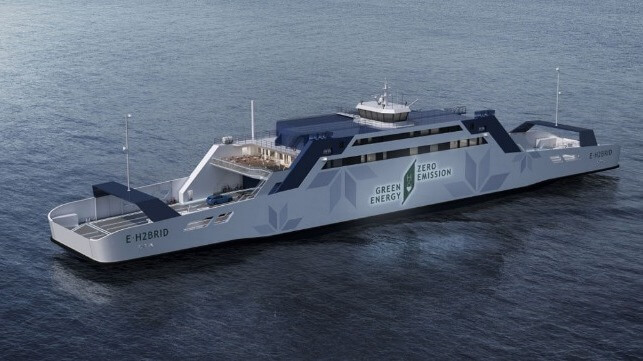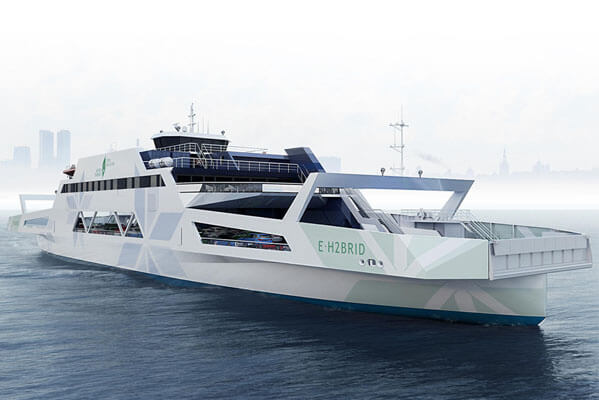Estonia Proceeds with Innovative Hydrogen-Electric RoPax Ferry

Estonian State Fleet, the national ferry operator, is moving forward with one of the most innovative ferry designs seeking to launch in 2026 one of the largest hydrogen-fueled, electric RoPax ferries. The design project began in 2021 and recently they concluded a tender for the shipyard to construct the vessel.
Designs for the zero-emission ferry were developed working with Finnish ship design and engineering firm Deltamarin. Lloyd’s Register reviewed and certified the design approving the current state of the design process to be suitable for further design, construction, and procurement of the RoPax ferry. The design was awarded Approval in Principle by LR last November and Estonian State Fleet immediately moved into the construction tender. Proposals were due by January 17, and they are expected to shortly announce the winner.
According to Andres Laasma, Director General of the Estonian State Fleet, great attention was paid to energy efficiency when designing the innovative ferry. The propulsion system calls for a fully electric drive that will be able to operate either from batteries charged while the vessel is docked or from hydrogen-fueled power cells.
"What makes the ferry special is the way it uses green energy and the technology of energy storage and release into electrical energy," says Laasma. "Thanks to updated technologies and a new hull design, the energy consumption of the new ferry is almost 20 percent lower compared to the previous generation ferries."

Lloyd's Register approved the design to proceed toward construction in November 2023 (LR)
He notes that the ferry which will have a little over 1,000 linear meters for cars, will be able to operate in Estonian ice conditions with lower energy consumption. It will also provide approximately 20 percent more space than previous generations of ferries. It will be able to accommodate nearly 200 passenger cars or for example a mix with 16 large trucks and 50 passenger cars. While being highly energy efficient, it will also increase passenger comfort with the ability to accommodate 700 people and provide a lounge area and restaurant with an onboard galley. There are also cabin spaces for the crew.
“The Estonian State Fleet is committed to leading the way in innovation within its sector,” said Laasma. “To achieve this, we have undertaken a project to develop a passenger ship with a remarkably high level of autonomy. Despite the challenges involved in this complex endeavor, including regulatory hurdles, technological risks, and significant initial investments, the potential benefits are considerable.”

that matters most
Get the latest maritime news delivered to your inbox daily.
The new ferry will be highly efficient and designed to take advantage of future developments. This includes systems for automatic movement and decision support. In the future, it will be able to operate fully autonomously handling functions including docking and mooring. It is also designed to be ready for remote operations.
Plans call for the ferry to connect the Estonian mainland with its two largest islands, Saaremaa and Hiiumaa. The company expects to spend approximately €40 million with the shipbuilding financed by the European Modernization Fund and CO2 quota fee revenue. The tender specifies the vessel should enter service on October 1, 2026.
